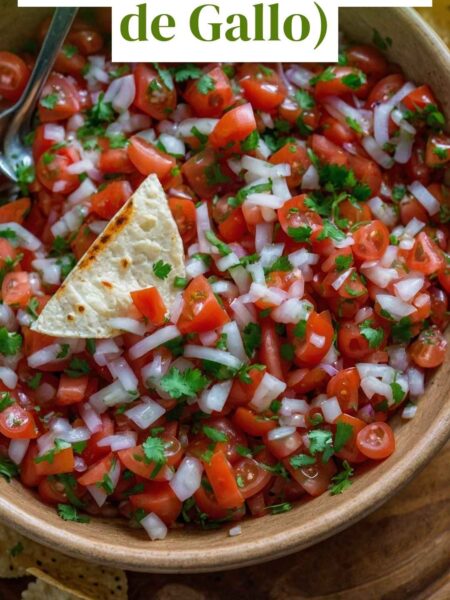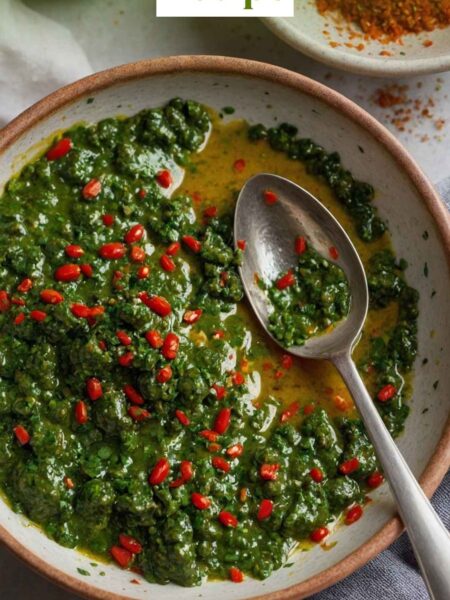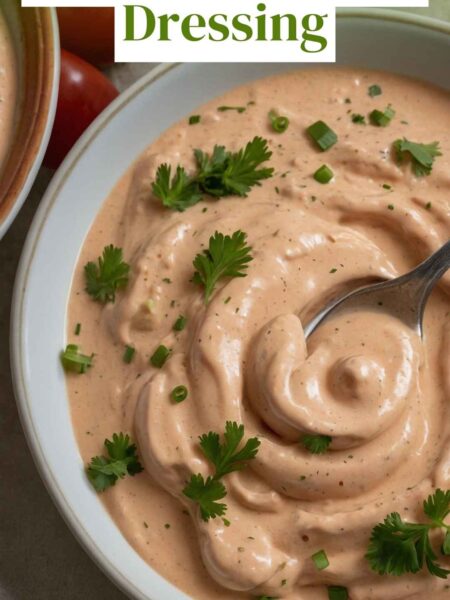If you’re planning a summer cookout or just a weekend barbecue, there’s a dish that’s sure to steal the show: ribs. Now, you might be wondering what pairs exceptionally well with this meaty delight. Well, let me paint a picture for you. Picture golden corn on the cob slathered in butter, a vibrant potato salad with a little tang, and a fresh, zesty coleslaw brightening up the plate. Add a few chilled drinks, and you’ve got a feast fit for kings and queens.
But let’s not get ahead of ourselves. Today, we’re diving straight into the adventure of discovering the best dry rub for ribs. This isn’t just any old rub; it’s a flavor-packed blend that makes your ribs sing—and that might be a little exaggerated, but if you try it, you might believe it!
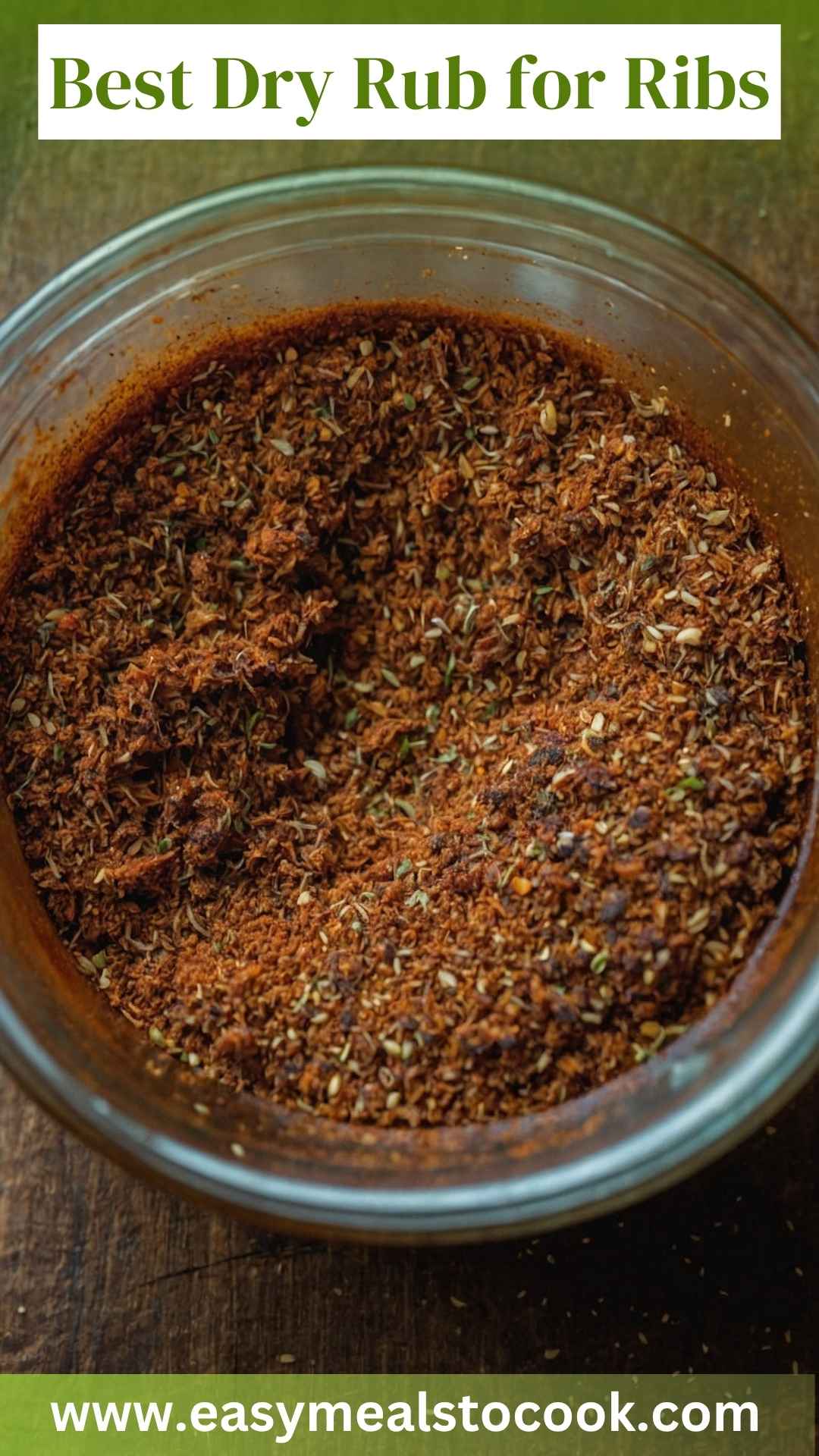
What is the Best Dry Rub for Ribs?
The best dry rub is a balance of sweet, savory, and spicy flavors. You want a mix that highlights the meat while adding that extra kick.
After years of experimenting, I’ve found that a rub featuring brown sugar, smoked paprika, garlic powder, and a hint of cayenne pepper creates a heavenly blend.
What is the Flavor Profile of this Dish?
When you apply this dry rub, you’re creating a flavor profile that’s rich and complex. The brown sugar adds a slight sweetness, which caramelizes beautifully during cooking. The smoked paprika infuses a subtle smokiness that’s so welcoming.
Garlic and onion powder bring warmth and depth, while the cayenne pepper tickles your taste buds with just enough heat.
Let’s break it down further:
Sweetness from Brown Sugar: This plays a crucial role in creating that beautiful caramelized crust.
Smokiness from Paprika: For ribs, you want that outdoor barbecue flavor, and smoked paprika delivers.
Spiciness from Cayenne: Optional, but the right amount swings the flavor into a delightful territory without overwhelming your palate.
What Makes This Recipe Different from Other Dry Rubs?
Many recipes stick to traditional blends with common spices. However, in my dry rub, I incorporate unique elements that elevate it. For example, ground cinnamon adds warmth and complexity, while celery salt provides a surprising note of earthiness. It’s these little twists that set this rub apart from the standard barbecue fare.
Ingredients You’ll Need
To make this incredible dry rub, let’s gather these ingredients:
- 2 teaspoons coarse kosher salt – Essential for balancing flavors.
- ¼ cup packed light brown sugar – For that sweet caramelization.
- 2 teaspoons freshly ground black pepper – Adds a lovely punch.
- 1 teaspoon dried thyme – Infuses herbal notes.
- 2 teaspoons smoked sweet paprika – For that smoky depth.
- ½ teaspoon celery salt – An unexpected earthy touch.
- 1 teaspoon garlic powder – Classic flavor enhancer.
- 1 teaspoon onion powder – Another essential key player.
- 1 teaspoon ground mustard – Provides tang.
- ½ teaspoon ground cinnamon – Adds warmth and intrigue.
- ½ teaspoon smoked chili powder – Enhances the smoky profile.
- ¼ teaspoon cayenne pepper – Optional for a gentle kick.

Step-by-Step Directions
Step 1: Prepare the Ingredients
Gather all your spices and measuring spoons. A little organization goes a long way! Make sure everything is ready to go. This step is crucial because it sets the tone for your dry-rub adventure.
Step 2: Mix the Dry Ingredients
In a mixing bowl, combine all the ingredients. Start with the salt and sugar, then add the spices one by one. Use a whisk or a fork to mix everything thoroughly. You want to break up any sugar clumps and ensure a uniform blend.
Step 3: Taste and Adjust
Once everything is mixed, it’s time for a taste test. Grab a tiny pinch—yes, you can eat it! This is your chance to figure out if you want more sweetness or spice. Adjust as needed, remembering that this should enhance the ribs, not overpower them.
Step 4: Apply the Rub to the Ribs
Generously coat your ribs with the rub, ensuring every nook and cranny is covered. Don’t hold back; get in there and massage it into the meat! This not only flavors the ribs but helps form that tasty crust when cooked.
Step 5: Let it Rest
Once your ribs are rubbed down, cover them with plastic wrap and let them rest in the refrigerator for at least an hour. For best results, let them marinate overnight. It allows the flavors to penetrate deeply into the meat.
Step 6: Cook Your Ribs
When you’re ready to cook, preheat your grill or oven. Cook your ribs low and slow for the best texture. Depending on your method, aim for a temperature of about 225°F for smoking or the same for the oven. Keep an eye on them to maintain moisture.
Tips for Making the Best Dry Rub for Ribs
Use fresh spices: The freshness of spices makes a significant difference. Old spices lose their potency!
Consider your audience: Adjust the heat level. If you’re serving kids, hold back on the cayenne.
Resting is crucial: Don’t rush; let the rub work its magic by resting beforehand.
Experiment: Tailor the rub to your preferences. Like heat? Add more cayenne. Prefer herbs? Incorporate more thyme.
Store it up: Make extra rub and store it in an airtight container for future barbecues.
Nutrition Information
While the focus here is primarily on flavor, it’s helpful to have an idea of the nutrition. Each serving of the dry rub (approximately 2 tablespoons) contains around:
- Calories: 80
- Total Fat: 0g
- Sodium: 300mg
- Carbohydrates: 20g
- Sugars: 16g
- Protein: 0g
This is for the rub alone, not accounting for the ribs themselves.
How Can I Store This Dry Rub for Ribs?
Storing homemade dry rubs is simple. Place it in an airtight container and keep it in a cool, dark place. It should last for several months. Just remember, if it starts to lose its aroma, it’s time to make a fresh batch!
Substitute Options for the Ingredients
If you find yourself missing one or two spices, don’t fret! Here are some substitutes you can use:
Brown Sugar: Use white sugar mixed with a little molasses if you want that sweet touch.
Smoked Paprika: If you don’t have it, try regular paprika with a drop of liquid smoke for that smokey flavor.
Cayenne Pepper: If you’re out, a pinch of red pepper flakes can provide a similarly fiery kick.
Celery Salt: Swap it for regular salt mixed with a bit of dried celery or just omit it completely.
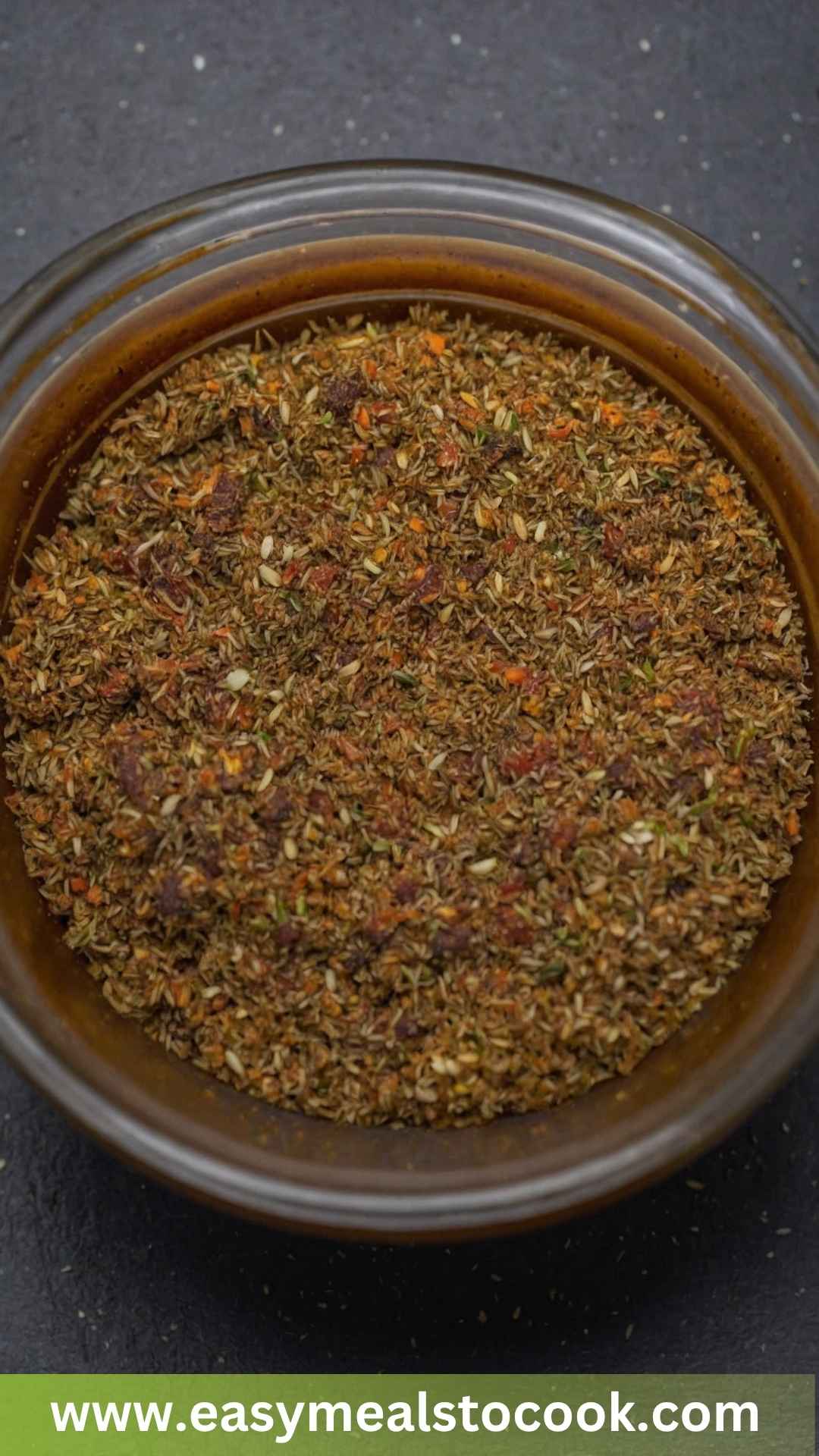
Conclusion
There you have it! The best dry rub for ribs is within your grasp. With a simple blend of spices, you can create a flavor explosion that will make your ribs shine with personality.
Remember, cooking is about experimentation and exploration, so feel free to tweak and adjust as suits your taste. Now that you’ve got this tool in your cooking arsenal, fire up that grill, invite some friends over, and enjoy the delicious results of your hard work. Happy cooking!
You’ll also like the following recipes!
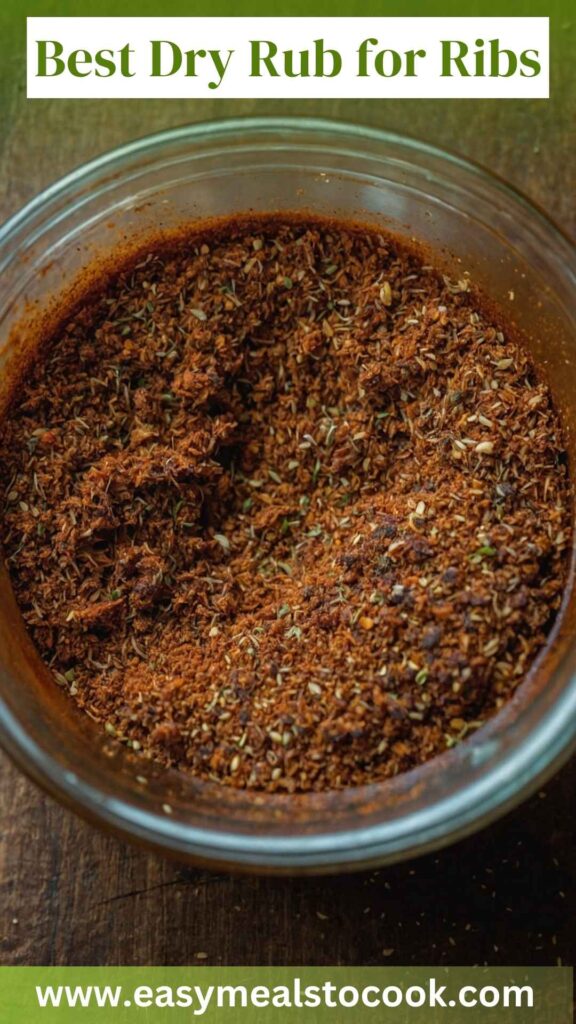
Best Dry Rub for Ribs – Easy Meals To Cook
Description
As a food enthusiast and cook, ribs have always held a special place in my heart. I remember the first time I experimented with dry rubs. It was a rainy afternoon, and the grill was smoking outside as I mixed together spices, inhaling the earthy aromas from the kitchen. Imagine my excitement when I pulled those perfectly seasoned ribs off the grill. Each bite was a revelation.
Now, let’s get down to business: What’s the best dry rub for ribs? You want something that packs flavor, provides depth, and enhances the natural taste of the meat. With a little creativity and some pantry staples, you can whip up a mix that will have your taste buds dancing.
Ingredients
Instructions
Step 1: Prepare the Ingredients
-
Gather all your spices and measuring spoons. A little organization goes a long way! Make sure everything is ready to go. This step is crucial because it sets the tone for your dry-rub adventure.
Step 2: Mix the Dry Ingredients
-
In a mixing bowl, combine all the ingredients. Start with the salt and sugar, then add the spices one by one. Use a whisk or a fork to mix everything thoroughly. You want to break up any sugar clumps and ensure a uniform blend.
Step 3: Taste and Adjust
-
Once everything is mixed, it's time for a taste test. Grab a tiny pinch—yes, you can eat it! This is your chance to figure out if you want more sweetness or spice. Adjust as needed, remembering that this should enhance the ribs, not overpower them.
Step 4: Apply the Rub to the Ribs
-
Generously coat your ribs with the rub, ensuring every nook and cranny is covered. Don’t hold back; get in there and massage it into the meat! This not only flavors the ribs but helps form that tasty crust when cooked.
Step 5: Let it Rest
-
Once your ribs are rubbed down, cover them with plastic wrap and let them rest in the refrigerator for at least an hour. For best results, let them marinate overnight. It allows the flavors to penetrate deeply into the meat.
Step 6: Cook Your Ribs
-
When you’re ready to cook, preheat your grill or oven. Cook your ribs low and slow for the best texture. Depending on your method, aim for a temperature of about 225°F for smoking or the same for the oven. Keep an eye on them to maintain moisture.
Nutrition Facts
Servings 10
- Amount Per Serving
- Calories 80kcal
- % Daily Value *
- Sodium 300mg13%
- Total Carbohydrate 20g7%
- Sugars 16g
* Percent Daily Values are based on a 2,000 calorie diet. Your daily value may be higher or lower depending on your calorie needs.
Note
- Use fresh spices: The freshness of spices makes a significant difference. Old spices lose their potency!
- Consider your audience: Adjust the heat level. If you’re serving kids, hold back on the cayenne.
- Resting is crucial: Don’t rush; let the rub work its magic by resting beforehand.
- Experiment: Tailor the rub to your preferences. Like heat? Add more cayenne. Prefer herbs? Incorporate more thyme.
- Store it up: Make extra rub and store it in an airtight container for future barbecues.



